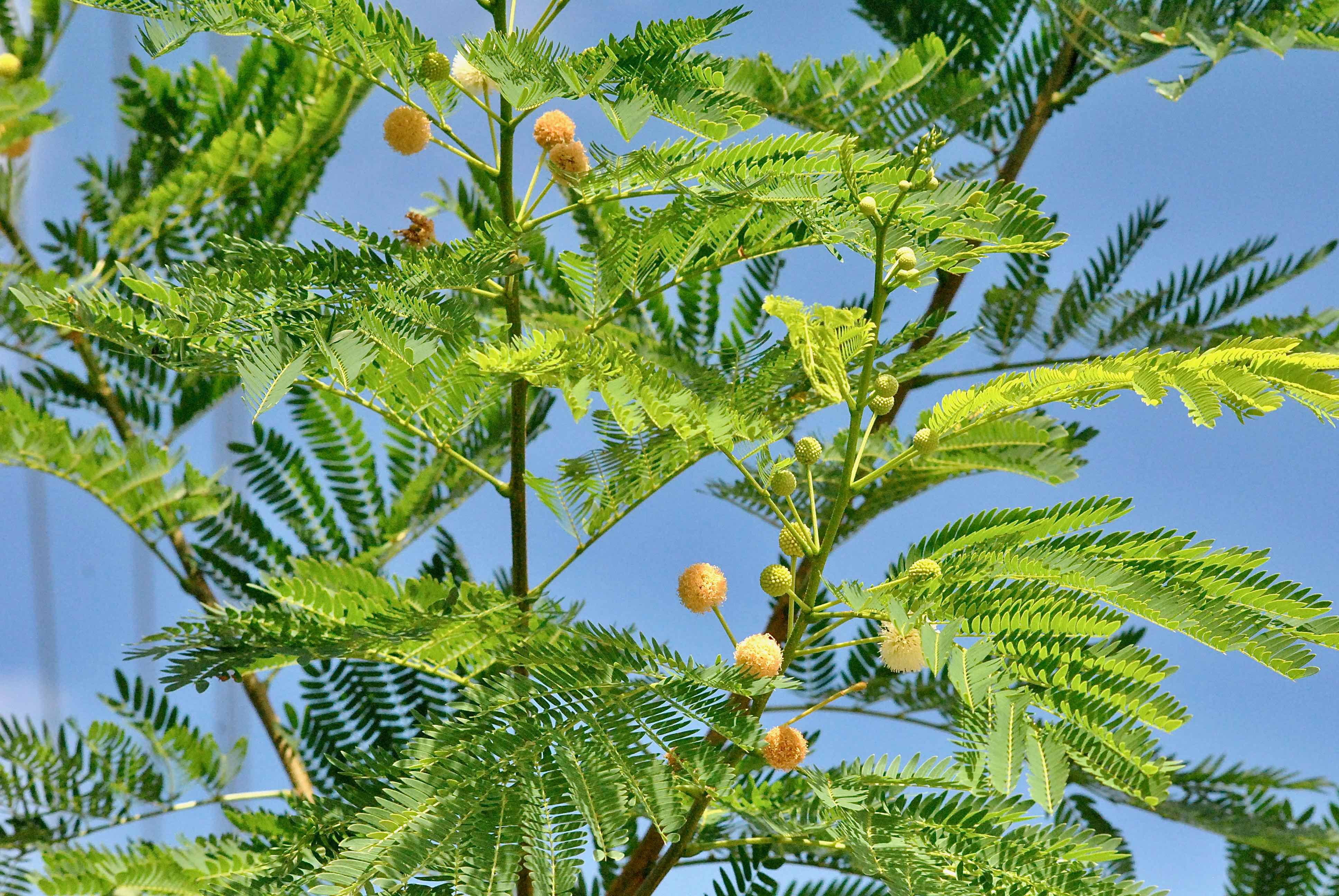
Lead tree, photographed at the Jones/Hungryland Wildlife and Environmental Area, Indiantown, Martin County, in April 2018.
If there was a Most-Wanted list for trees — the kind they put up in post offices — the lead tree would be on it. Perhaps at the top. Florida lists the lead tree — known scientifically as Leucaena leucocephala — as both invasive and as a noxious weed. It's that bad.
The International Union for Conservation of Nature puts the lead tree on its global 100 worst-invasive list. Not a lot of love for this member of the mimosa branch of Fabaceae, the pea family, and native of Mexico and Central America. Mind you, it's well-behaved in its native range; elsewhere, not so much.
Lead tree is graceful, growing to about 60 feet tall, with long compound leaves and white, ball-shaped clusters of flower that turn brown as they mature. Like peas generally, the fruit is a pod packed with seeds, in this case as many as 30. The bark is gray-brown.
Back in its home range lead tree is used to make charcoal and for lumber. It's used as a windbreak for crops, such as coffee and cocoa. The pods are eaten, and the seeds are used to make jewelry.
Lead tree is found throughout most of Florida's peninsula. It's also found in a few warm-weather states, including Texas, Arizona and California.
In a sense, lead tree is a wonder plant. It seduces people, who see its many positives without considering its many negatives. The Spanish began the global spread of lead tree, when they used it as cattle fodder during voyages between their New World colonies and the Philippines before 1815.
From there, it spread throughout the tropical world as a shade tree for crops. It came to Florida in 1898 as an agricultural plant. It's still seen as an important tree in much of the world.
Because it is a legume, it fixes nitrogen to the soil, and the pods it produces are high-protein feed for cattle. It is a rapid grower, reaching as high as 20 feet within as little as three years. Not only does it improve soil and provide feed, it also provides shade, a three-fer if you will. But it is aggressive, grows in dense thickets and crowds out native vegetation. The seed pods it produces spread rapidly in the wind and by birds and rodents, and even cows. And once established, it is difficult to eradicate. It can render land literally unuseable.
The pods contain mimosine, a toxic amino acid. Although generally not a problem with ruminant animals like cattle, which have bacteria in their multiple stomachs that break it down, mimosine in humans can cause thyroid problems, hair loss and infertility if eaten uncooked or too frequently.
In India, officials attempted to take advantage of the lead tree's rapid growth by using it to bring some green into urban areas. That backfired because of the tree's shallow root system wouldn't hold against wind and rain. And like other mimosas, it's susceptable to disease and insects.
In the Ascension Islands, lead tree is believed to have contributed to the extinction of a native shrub called Oldenlandia adscensionis. In places in Hawaii, it's become the dominant plant species.
In Florida, it is illegal to introduce, multiply, possess, move, or release lead tree. Advocates say there are two subspecies that are less invasive and might have value as a biofuel. The Florida Department of Agriculture, however, says there's no evidence to back up the claim.
Other common names include white leadtree, jumbie bean (jumbie is a disease animals can get from eating parts of the plant) and horse tamarind.
Jones/Hungryland Wildlife and Environmental Area






